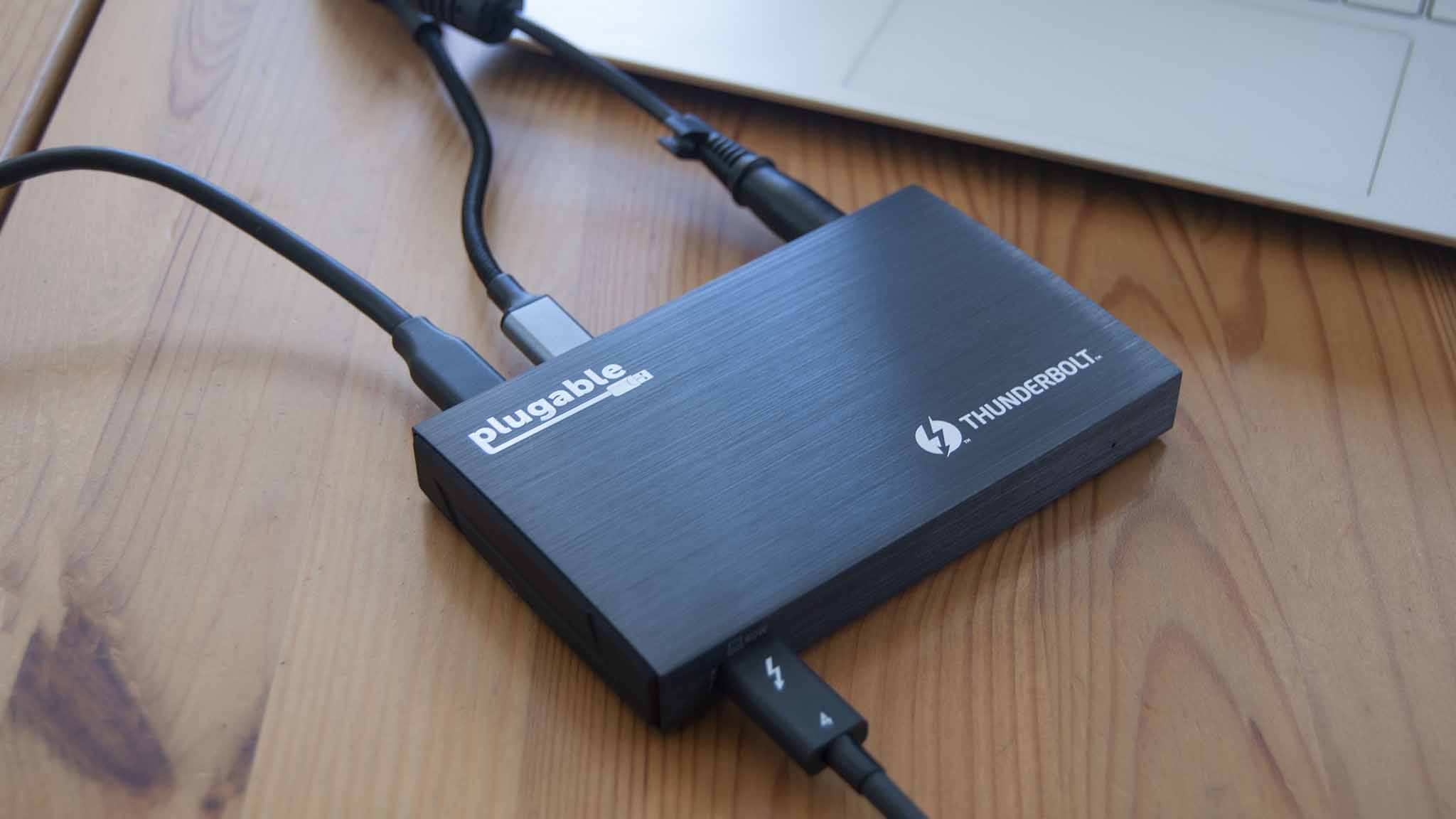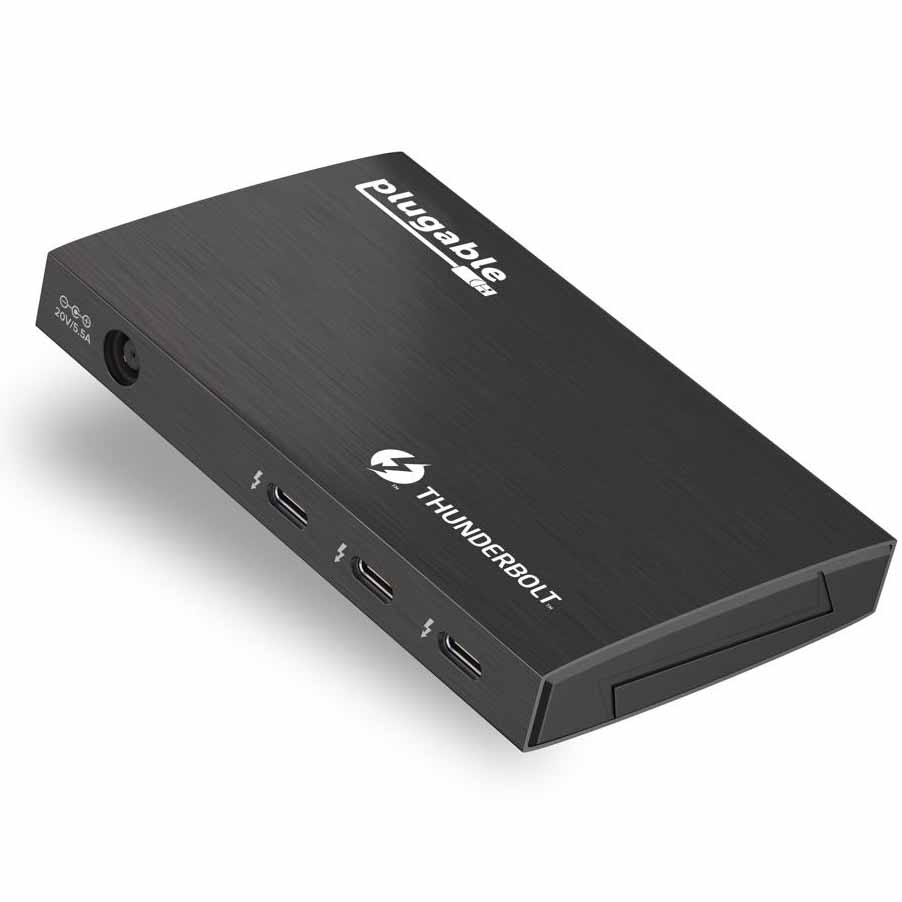Windows Central Verdict
The Plugable Thunderbolt 4 and USB4 Hub is well built, compact, and offers some enticing features including dual 4K @ 60Hz display support and 60W charging. However, its lack of anything but TB4 ports might not be the right pick for many people who are still using older accessories.
Pros
- +
Three downstream Thunderbolt 4 ports
- +
Up to 60W power to the host
- +
Sturdy brushed aluminum design without plastic
- +
2-year warranty
- +
Compact build
Cons
- -
No USB-A
- -
Can find cheaper hubs that do the same (or more)
Why you can trust Windows Central
Plugable is no stranger to docking and hub accessories, and it's been making a strong push into the emerging world of Thunderbolt 4. One accessory that's been on our radar for while is the Plugable Thunderbolt 4 and USB4 Hub (TBT4-HUB3C) that takes a different approach than the full-size TB4 docking stations. It has a much smaller footprint, it offers three downstream Thunderbolt 4 ports, and it can charge the host or connected accessories thanks to a required AC adapter. I've been using this hub for the last couple of weeks to see what it's all about and, ultimately, whether or not it's worth your money.
Plugable TBT4-HUB3C: Price, availability, and specs
Plugable supplied Windows Central with a review unit of its Thunderbolt 4 and USB4 Hub with model number TBT4-HUB3C. It currently costs $199 and it is available at Amazon or Newegg. Should you find the hub is out of stock at third-party retailers, you can also check out Plugable's official website for information regarding future restocking.
Connection: Thunderbolt 4, detachable, 2.6 feet (0.8m)
Chipset: Goshen Ridge
Ports: Three Thunderbolt 4 (downstream)
Power: Up to 60W host, 15W Thunderbolt 4
Max display resolution: Dual 4K @ 60Hz, 8K @ 30Hz
Warranty: 2 years
This hub employs Thunderbolt 4 and USB4 technology with 40Gbps bandwidth for excellent performance. We have a guide that explains the differences between Thunderbolt 4, Thunderbolt 3, USB4, and USB3 for those who are just getting into these types of accessories.
The hub works up to the standard that the host laptop is using. For example, if you plug the hub into a Thunderbolt 3 host port, the hub's ports will function as Thunderbolt 3. Same with standard USB-C.
For this review, I tested the Plugable TBT4-HUB3C with Windows 10 and Windows 11 laptops, with Thunderbolt 3 and Thunderbolt 4 connectivity.
Plugable TBT4-HUB3C: What I like
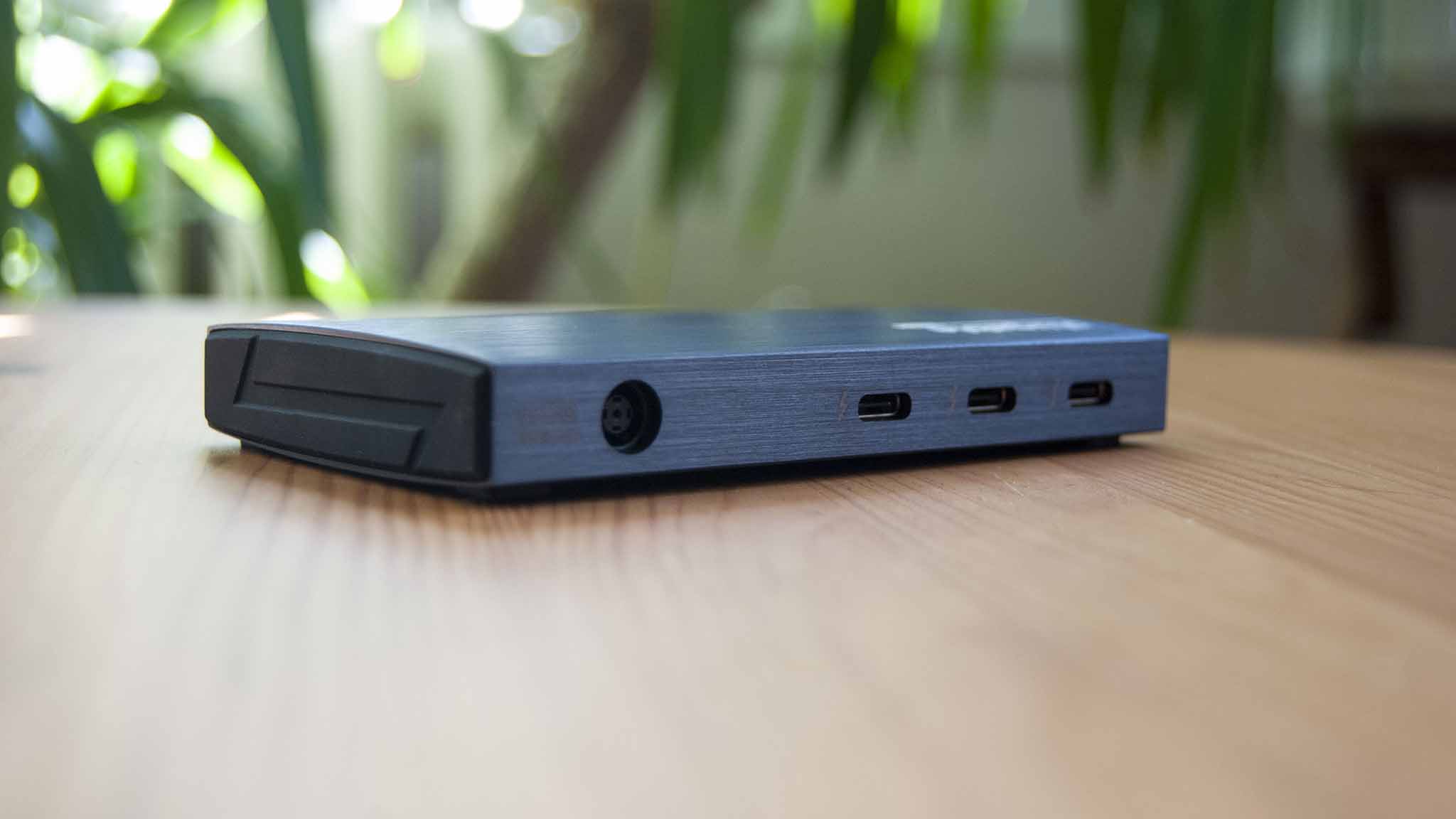
The Plugable Thunderbolt 4 and USB4 Hub (TBT4-HUB3C) has a compact aluminum design with brushed finish that helps hide fingerprints and smudges. It has a solid build that feels like it can withstand some significant abuse, especially thanks to the rubber pads on the left and right edges. It appears at first like they might be intended as feet if you want to use the hub vertically, but they don’t provide enough stability. They’re likely used in lieu of simple plastic panels that many other docks incorporate. Four rubber feet on the true bottom of the hub keep it in place when used horizontally (as intended). The top of the hub has Plugable and Thunderbolt logos.
On the front edge is the Thunderbolt 4 host port and a tiny LED. It glows white when the hub is connected to power, changing to green when a laptop is properly connected. The hub is best cut out for use with a Thunderbolt 4 or USB4 host — including many of the best Windows laptops currently available — though it will also function at a lower performance level if used with Thunderbolt 3 or standard USB-C. The host cable is detachable, meaning you won’t have to replace the entire hub if it’s somehow damaged.
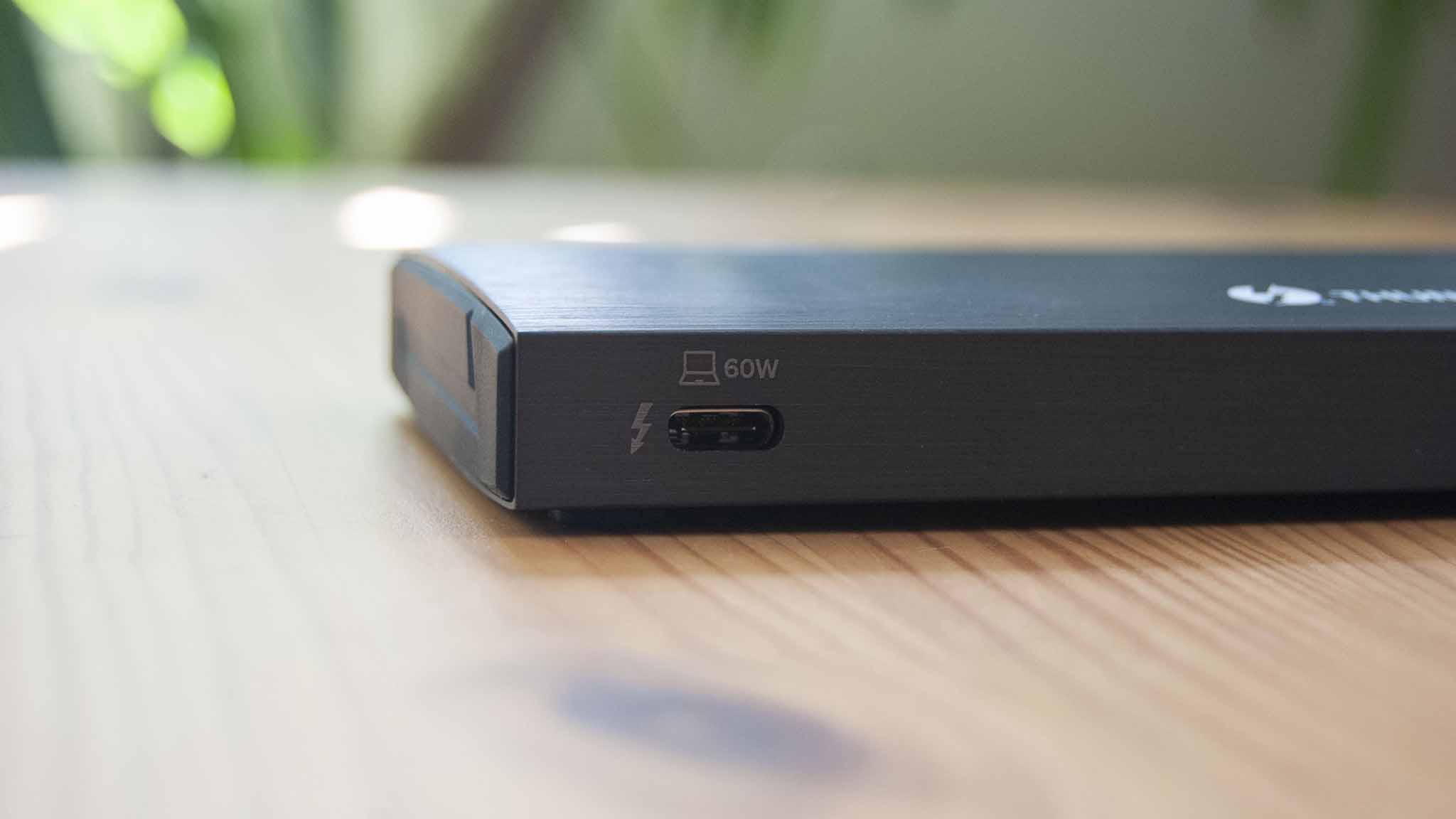
Plugable's Thunderbolt 4 and USB4 Hub offers up to 60W of charging power to the host laptop, as well at 15W in each downstream TB4 port.
The back edge of the hub has a 20V barrel charging input and three downstream Thunderbolt 4 ports. The 110W AC adapter’s overhead allows for up to 60W of power back to the host, keeping most laptops without discrete graphics charged for when you need to go mobile. Each downstream TB4 port also hits up to 15W of charging power for any connected accessories. In my testing, each port was able to deliver power simultaneously without issue.
Display support changes depending on the capabilities of the host. Working with Windows and Thunderbolt 4, the hub is capable of handling two 4K displays at 60Hz or one 8K display at 30Hz. If you’re connecting to Thunderbolt 3 or USB4, the dual display support remains the same though single support drops down to 4K from 8K. And if you connect with regular USB-C 3.2, the maximum display support you’ll get is one screen at 4K with a 30Hz refresh rate.
I regularly connected a 4K external display, keyboard, external SSD, and SD card reader hub to the Plugable TBT4-HUB3C without any performance issues. I could add another 4K display to the setup and retain a 60Hz refresh rate on both screens; Plugable makes this easier by including an HDMI to USB-C adapter in the box.
Plugable TBT4-HUB3C: What I don't like
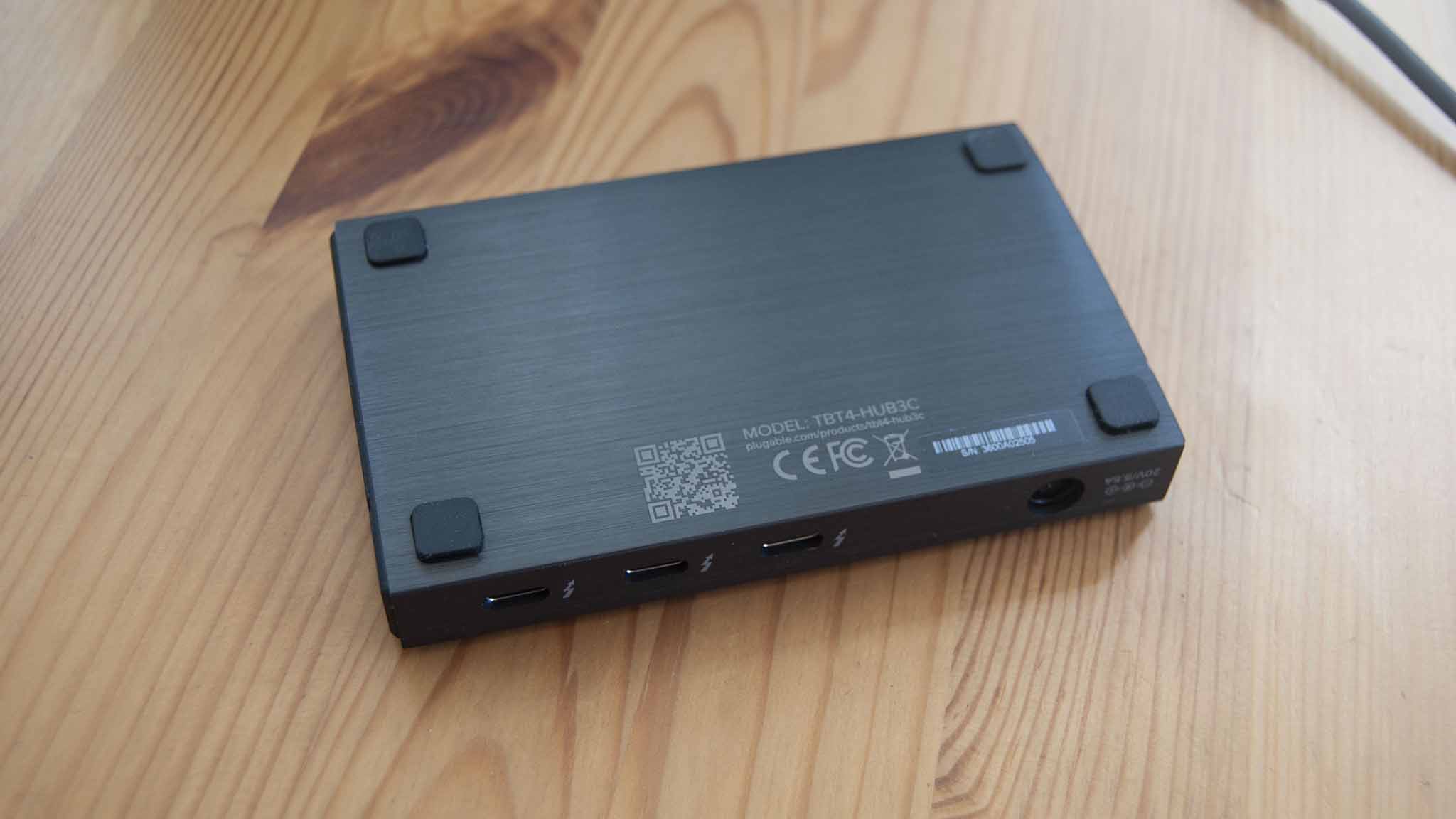
Hubs like the TBT4-HUB3C are best viewed as an extension of your laptop’s Thunderbolt 4 port rather than a full docking station. It strictly splits a single port into three while also offering passthrough charging. This is important when many of the best Ultrabooks are narrowing down port selection to one or two Thunderbolt, but it doesn’t solve problems surrounding SD or microSD readers and USB-A.
You can always add more docks or hubs downstream of the TBT4-HUB3C, but a setup can quickly get unnecessarily complicated compared to just outright buying one of the best Thunderbolt 4 docking stations. Adding extra hubs and adapters might also end up taking more space on your desk than a standard dock. This makes the TBT4-HUB3C best reserved for those who are trying to move their workflow strictly over to Thunderbolt 4.
The hub also isn’t cut out for travel despite its compact size. The sizable AC adapter, which is required to use the hub, takes up quite a bit of space and adds a lot of weight to the package. This is an accessory that’s best kept on a desk in a more permanent setup.
Plugable TBT4-HUB3C: Competition
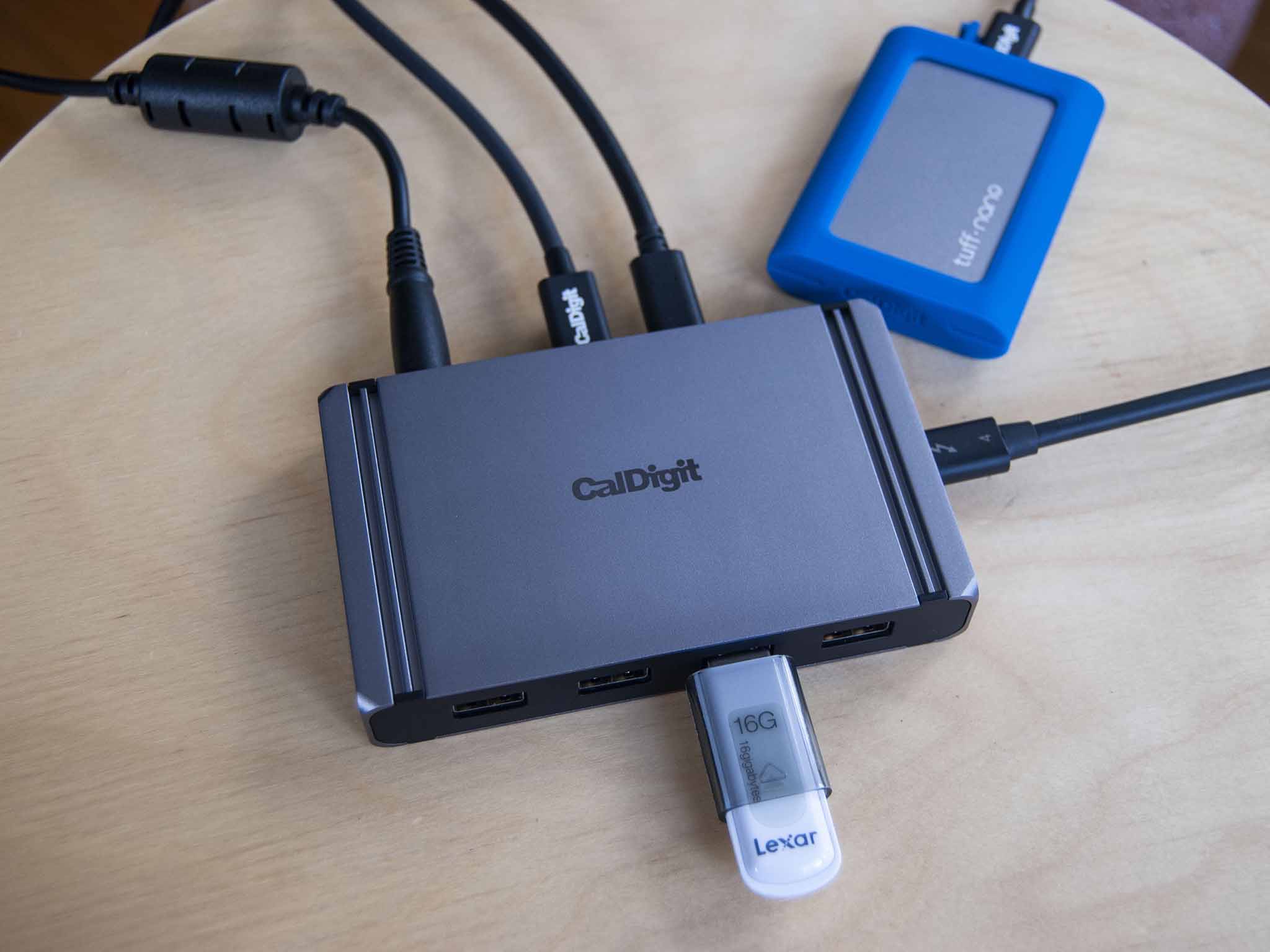
The main competition for Plugable’s Thunderbolt 4 and USB4 Hub comes from docking juggernaut CalDigit. I reviewed its Element Hub last year, coming away impressed by the build quality and features on offer. Similar to Plugable’s hub, the Element offers three downstream Thunderbolt 4 ports with up to a higher 18W of charging each. Its host charging power tops out at 60W, and it requires a sizable AC adapter to function. Display support is the same, with up to dual 4K displays at a 60Hz refresh rate.
Seem familiar? The Element Hub pulls away by also offering four USB-A 3.2 (Gen 2) ports with 10Gbps speed. The SD/microSD issue still isn’t solved, but at least you don’t need to track down extra dongles for connected older accessories still using USB-A. The catch here is that the Element Hub currently costs about $250, up from the initial $200 price. That’s $50 more than Plugable’s TBT4-HUB3C, which might not make sense if you don’t need the extra USB-A ports.
If you’d like to spend less than the Plugable hub’s $200 price tag, you might want to check out the OWC Thunderbolt Hub. It currently costs about $179 and offers three downstream Thunderbolt 4 ports, one USB-A 3.2 (Gen 2) with 10Gbps, a lock slot to keep it on your desk, 60W power delivery to the host, and dual 4K display support. The downside here is that it uses a lot more plastic than Plugable’s hub.
Should you buy the Plugable Thunderbolt 4 and USB4 Hub?
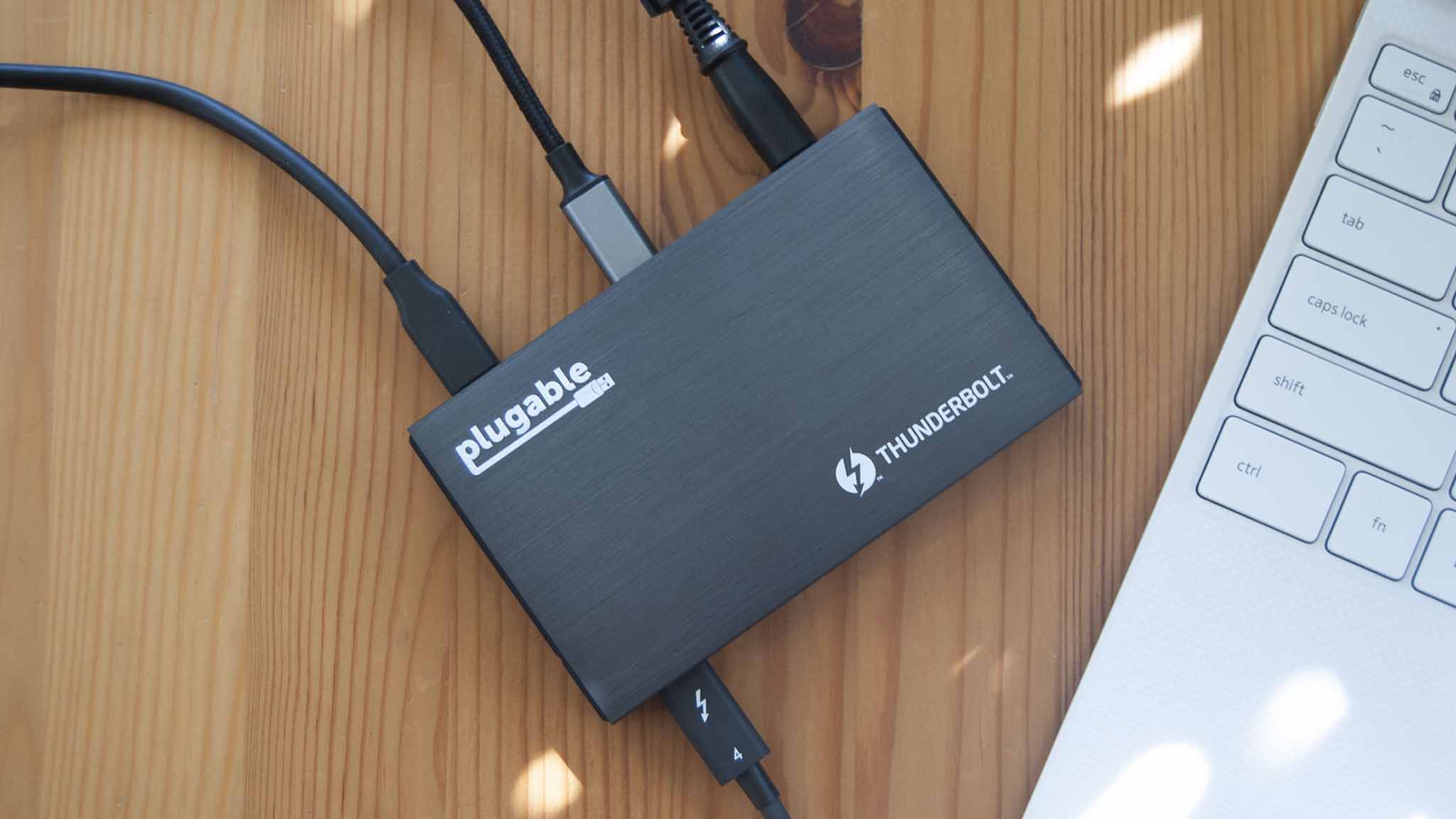
Who it's for
- Those who need extra Thunderbolt 4 ports and not much else
- Those with a laptop that can remain charged with 60W power
- Those who prefer an all-metal dock without plastic casing
Who it isn't for
- Those who need extra ports like USB-A or SD and microSD card readers
- Those who dislike adding dongles to a setup
- Those who don't mind paying less for a similar hub that's not built quite as well
Plugable's Thunderbolt 4 and USB4 Hub (TBT4-HUB3C) is a sturdy and compact accessory that feels anything but cheap. I love the brushed aluminum finish and the rubber endcaps that take the place of common plastic faceplates. Having dual 4K @ 60Hz display support is fairly normal (though appreciated), and the 60W host charging can keep most Ultrabooks topped up. The hub doesn't take up much room on a desk, but this could change if you're adding more dongles and docks.
And that's the main issue here. The inclusion of only Thunderbolt 4 ports will work for some workflows (like if you're connecting a bunch of high-speed external storage), but for others it will be limiting. Many older accessories are still using USB-A, and having an SD card reader is invaluable for many people.
This puts the Plugable TBT4-HUB3C into a fairly niche category, overshadowed by similar products that offer USB-A as well as Thunderbolt 4. Rest assured, if you do only need to add Thunderbolt 4 to your setup, this hub is high quality and priced competitively.

Cale Hunt brings to Windows Central more than eight years of experience writing about laptops, PCs, accessories, games, and beyond. If it runs Windows or in some way complements the hardware, there’s a good chance he knows about it, has written about it, or is already busy testing it.
